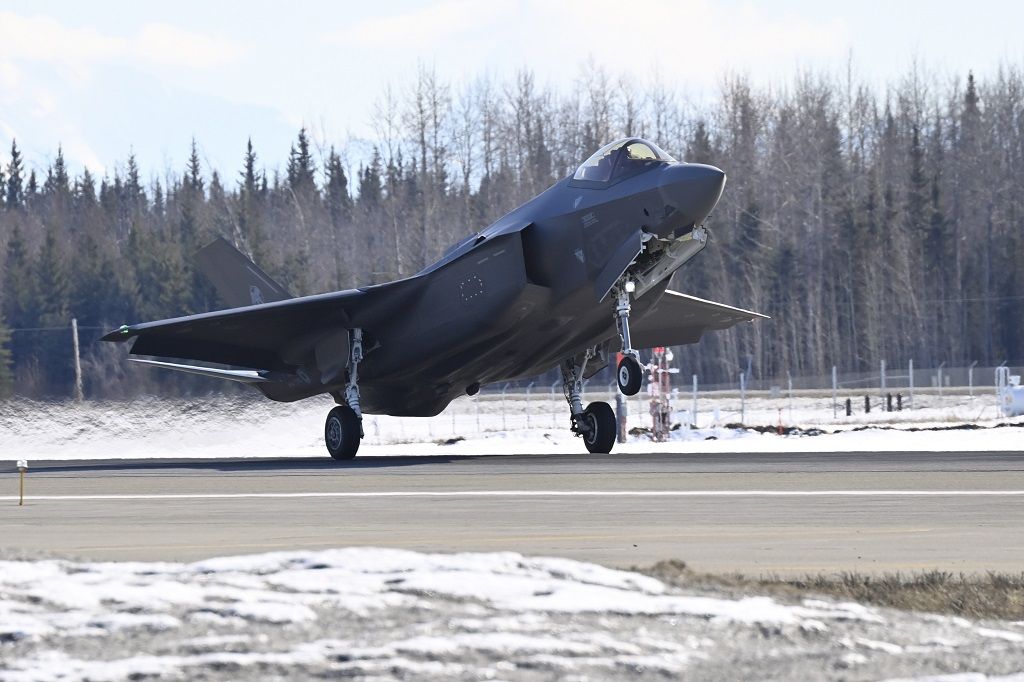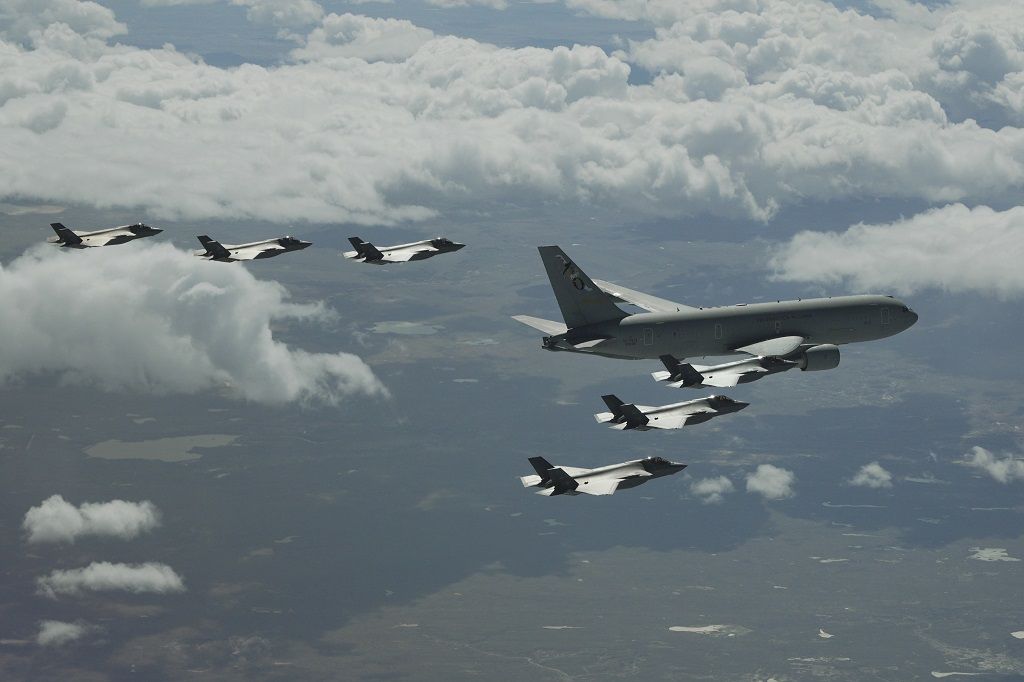EIELSON (ALASKA). A warm sun, after days of harsh weather with temperatures often below freezing, illuminated the first take-offs of the Air Force aircraft from Eielson air base as part of Red Flag Alaska 24-1 (RF A 24-1) .
AM Eurofighter at the Eielson base
Started on April 18th, this exercise will involve Italian and American pilots and specialists until May 3rd.
The Air Force participates in the Red Flag Alaska 24-1 with an Autonomous Flight Unit (Large Force Element) of four types of aircraft, in their first experience in Alaska, capable of expressing a broad spectrum of aerospace power capabilities, that is, two different types of fighters (the Eurofighter and the F-35A), an AEW – Airborne Early Warning platform with the E-550 CAEW capable of ensuring aerial surveillance and command and control functions, and finally an AAR tanker aircraft (Air to Air Refueling) KC-767A.


AM F-35A taking off
The Italian assets involved are all redeployed on the Eielson base, with the exception of the CAEW which was deployed to the nearby Fairbanks international airport for logistical reasons.
The United States Air Force (USAF) Pacific Air Forces (PACAF) is participating with F-16C, KC-135, KC-130J, KC-46 and E-3, additional tactical transport assets and various helicopters. An AV-8N from the United States Marine Corps and an EA-18G from the United States Navy also participate in Red Flag Alaska 24-1.
The Red Flag Alaska exercise, initially born under the name of Cope Thunder, together with the Red Flag organized at the Nellis base in Nevada, were designed to allow flight crews to train in advanced air combat, practicing missions with a extremely realistic and A2AD (Anti Access Area Denial) type scenarios.


Six F-35As in flight next to an AM KC 767A
In the next two weeks, Italian and American pilots will therefore have the opportunity to practice complex air missions, with over one hundred sorties per day, characterized by a high level of difficulty, with the presence of Air to Air threats, equipped with modern armament and with a large missile array (SAM), fully integrated into a training scenario that allows you to make the most of the potential of the existing assets and to replicate real situations.
During a flight exercise such as Red Flag Alaska 24-1, a progression in the challenge is experienced so that all participants can share ideas and lessons learned, in order to best utilize the capabilities of each platform employed, thus achieving the The final objective, all the various tasks assigned to the flight mission, in the most effective way. Red Flag Alaska participants are organized into defensive forces (so-called Blue Air) and offensive forces (so-called Adversary), which are used as a tool to train the Blue Air component. At the height of the exercise, up to 70 fighters can operate simultaneously in the same airspace. Two air missions will be conducted each day during Red Flag Alaska 24-1. All exercises take place in the Joint Pacific Range Complex over Alaska, a very large airspace, available with few restrictions, consisting of extensive areas dedicated to military operations, special use airspace and aerial firing ranges for a total area of more than 67,000 square miles (equivalent to approximately 174,000 square km) which allows all participants to operate each weapon system with almost no limitations.


Eurofighter taking off
Red Flag Alaska is configured as one of the most realistic scenarios in the world in developing the integration and synergy of the existing air assets, for the conduct of complex air operations. In this context, the Italian fighter aircraft present at Eielson will carry out both penetration missions into adversary territory, known as Air Interdiction, and support missions for ground forces, as well as cooperating in missions for the recovery of personnel in hostile territory. It is an exercise context that is not surprisingly defined as “complex” due to the high number of aircraft taking part and the crisis scenario reproduced.
Red Flag Alaska is hosted four times a year at Eielson and Elmendorf Air Force Bases by the United States Air Force’s Pacific Air Force (PACAF). That exercise, originally called Cope Thunder, was moved to Eielson from Clark Air Base, Philippines, in 1992, after the eruption of Mount Pinatubo on June 15, 1991 forced a reduction in operations. Cope Thunder was renamed Red Flag Alaska in 2006, for having over time acquired the complexity of the exercise of the same name called Red Flag and organized at Nellis AFB (Nevada), while distinguishing it from it due to the airspace available.
© ALL RIGHTS RESERVED
Tags: Air Force Armed Forces takes part Red Flag Alaska exercise









